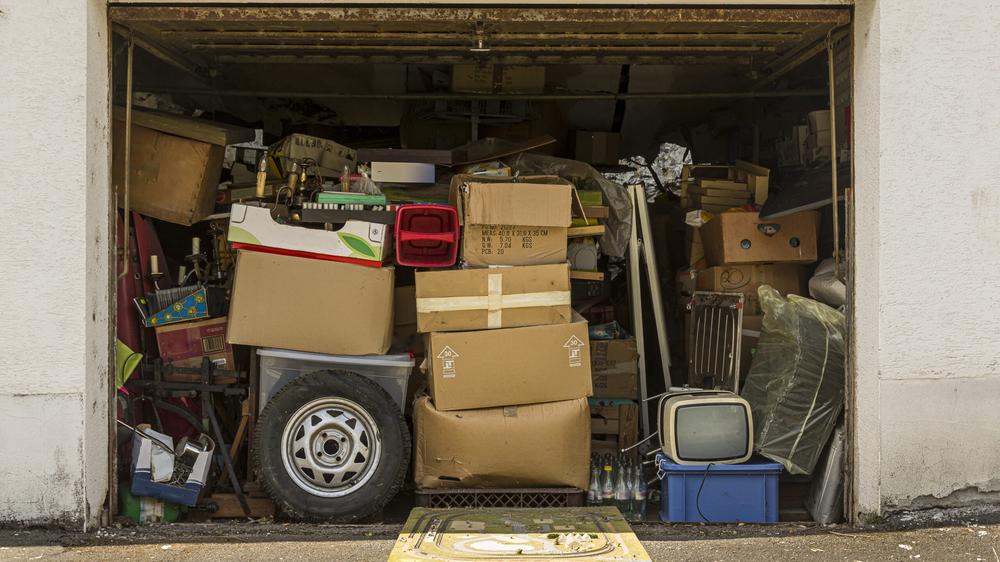There are plenty of reasons to be pessimistic about electric vehicle adoption here in the US. The current administration has made no secret of its hostility toward EVs and, as promised, has ended as many of the existing EV subsidies and vehicle pollution regulations as it could. After more than a year of month-on-month growth, EV sales started to contract, and brands like Genesis and Volvo have seen their customers reject their electric offerings, forcing portfolio rethinks. But wait, it gets worse.
Time and again, surveys and studies show that fears and concerns about charging are the main barriers standing in the way of someone switching from gas to EV. A new market research study by Telemetry Vice President Sam Abuelsamid confirms this, as it analyzes the charging infrastructure needs over the next decade. And one of the biggest hurdles—one that has gone mostly unmentioned across the decade-plus we've been covering this topic—is all the junk clogging up Americans' garages.
Want an EV? Clean out your garage
That's because, while DC fast-charging garners all the headlines and much of the funding, the overwhelming majority of EV charging is AC charging, usually at home—80 percent of it, in fact. People who own and live in a single family home are overrepresented among EV owners, and data from the National Renewable Energy Laboratory from a few years ago found that 42 percent of homeowners park near an electrical outlet capable of level 2 (240 V) AC charging.
But that could grow by more than half (to 68 percent of homeowners) if those homeowners changed their parking behavior, "most likely by clearing a space in their garage," the report finds.
"90 percent of all houses can add a 240 V outlet near where cars could be parked," said Abuelsamid. "Parking behavior, namely whether homeowners use a private garage for parking or storage, will likely become a key factor in EV adoption. Today, garage-use intent is potentially a greater factor for in-house charging ability than the house’s capacity to add 240 V outlets."
Creating garage space would increase the number of homes capable of EV charging from 31 million to more than 50 million. And when we include houses where the owner thinks it's feasible to add wiring, that grows to more than 72 million homes. And that's far more than Telemetry's most optimistic estimate of US EV penetration for 2035, which ranges from 33 million to 57 million EVs on the road 10 years from now.
I thought an EV would save me money?
Just because 90 percent of houses could add a 240 V outlet near where they park, it doesn't mean that 90 percent of homes have a 240 V outlet near where they park. According to that same NREL study, almost 34 million of those homes will require extensive electrical work to upgrade their wiring and panels to cope with the added demands of a level 2 charger (at least 30 A), and that can cost thousands and thousands of dollars.
All of a sudden, EV cost of ownership becomes much closer to, or possibly even exceeds, that of a vehicle with an internal combustion engine.
Multifamily remains an unsolved problem
Twenty-three percent of Americans live in multifamily dwellings, including apartments, condos, and townhomes. Here, the barriers to charging where you park are much greater. Individual drivers will rarely be able to decide for themselves to add a charger—the management company, landlord, co-op board, or whoever else is in charge of the development has to grant permission.
If the cost of new wiring for a single family home is enough to be a dealbreaker for some, adding EV charging capabilities to a parking lot or parking garage makes those costs pale in comparison. Using my 1960s-era co-op as an example, after getting board approval to add a pair of shared level 2 chargers in 2019, we were told by the power company that nothing could happen until the co-op upgraded its electrical panel—a capital improvement project that runs into seven figures, and work that is still not entirely complete as I type this.
The cost of running wiring from the electrical panel to parking spaces becomes much higher than for a single family home given the distances involved, and multifamily dwellings are rarely eligible for the subsidies offered to homeowners by municipalities and energy companies to install chargers.
Currently, around a million EV owners live in multifamily dwellings, and 11 percent of those park near enough to an electrical outlet to charge their car. Some states are mandating that new-build multifamily developments must make 20–25 percent of parking spaces EV-ready. Telemetry's estimates for EV charging-capable parking spaces in multifamily dwellings by 2035 run from 2.9 million to 6.5 million for new developments, and 6.7 million to 11.4 million in total.
But the report notes that "those numbers represent raw potential, assume a willingness among MFD property owners to allow electrical work, and discount parking spot distribution. Even in those best-case scenarios, the potential supply of MFD parking for EV owners will be significantly lower than demand, and MFD property owners will likely charge a premium for such spots in addition to any charging fees collected by the charging network itself."
Yes, we still need public chargers
If 80 percent of charging happens at home, then it follows that 20 percent of charging takes place in public, and this number will only increase as used EVs become cheaper and adoption grows among those without access to charging at home. Telemetry forecasts that between 11.7 million and 14.3 million house-owning EV drivers will need to rely on public level 2 and level 3 (DC) charging by 2035. Another 7.8 million to 8.1 million EV owners who live in multifamily dwellings by 2035 will also be dependent on charging away from home.
Telemetry estimates that there will be demand for between 523,000–586,000 DC fast-chargers by 2035, and an additional 1.5 million–1.6 million level 2 chargers. "The difficulties in getting power to DCFC sites are further compounded by the rapid development of new AI data centers that consume huge amounts of generation and distribution capacity as well as transformers," Abuelsamid wrote.

 Google reveals it isn’t making tablets, smart rings, flip phones, or glasses (yet)
Google reveals it isn’t making tablets, smart rings, flip phones, or glasses (yet)